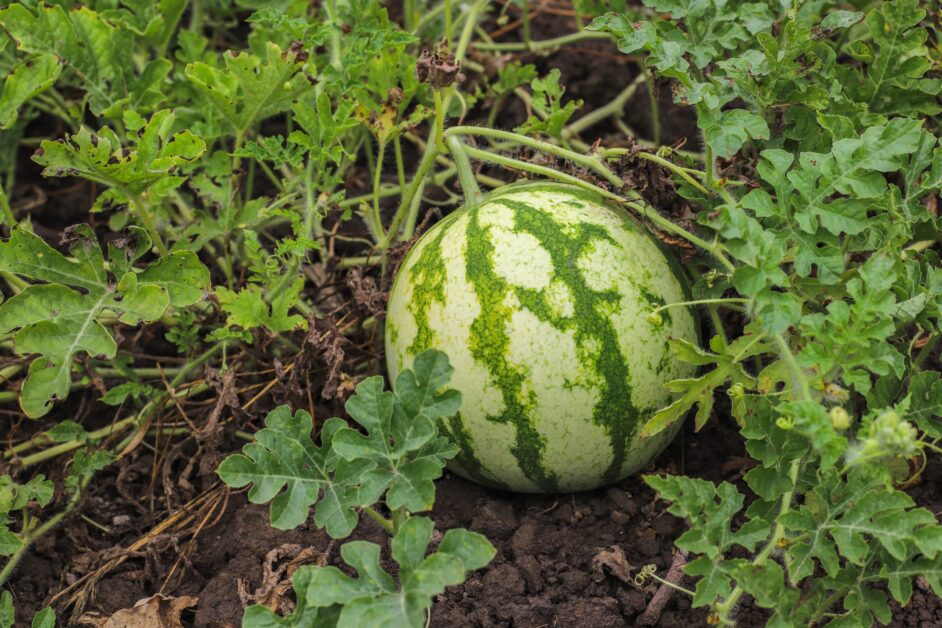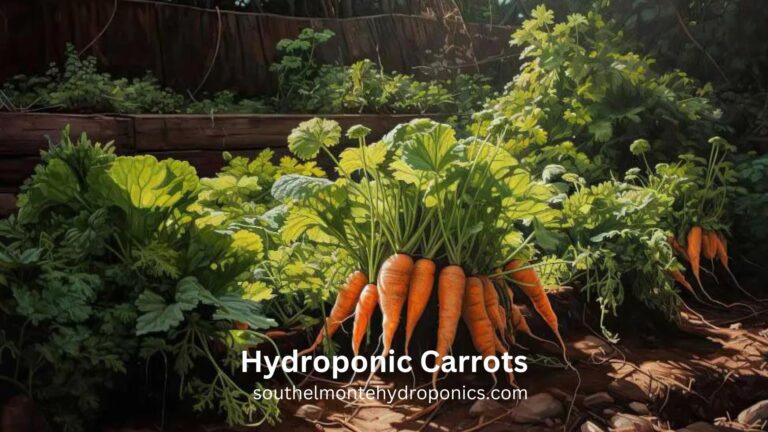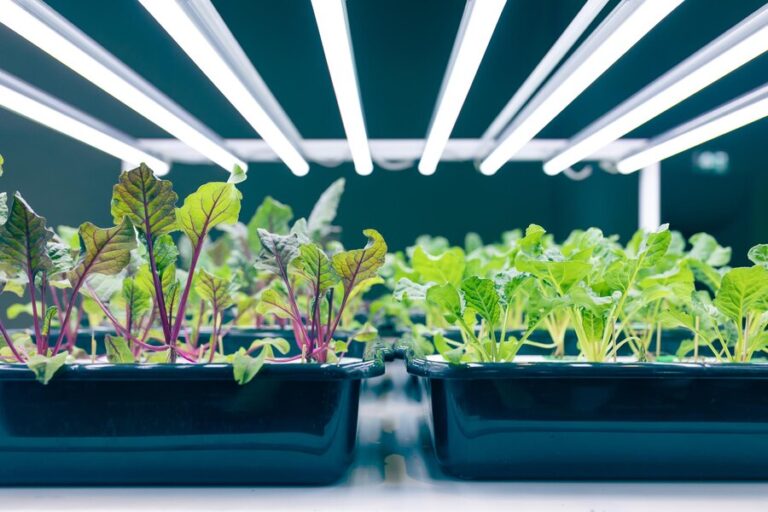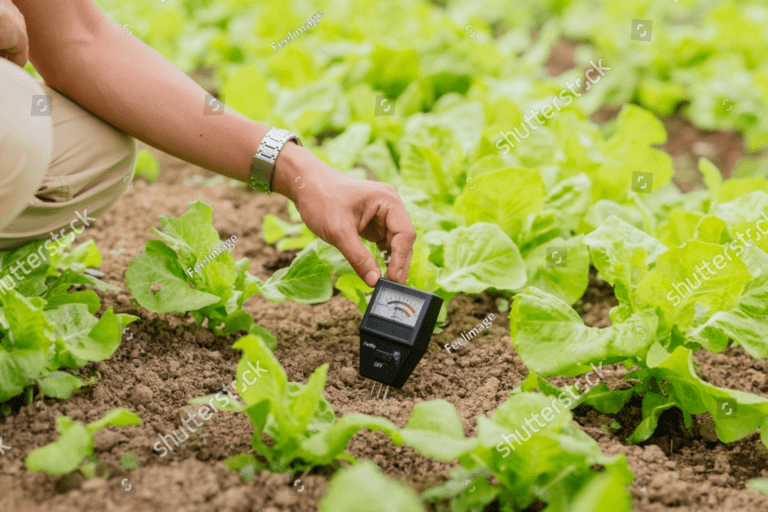How to Grow Watermelon: How to Enjoy Summer’s Bounty
Table of Contents
Selecting the Right Watermelon Varieties for Your Garden
Watermelons are a popular choice for many gardeners due to their juicy and refreshing taste. However, selecting the right watermelon varieties for your garden is crucial to ensure a successful harvest. With a wide range of options available, it’s important to consider factors such as size, flavor, and growing conditions.
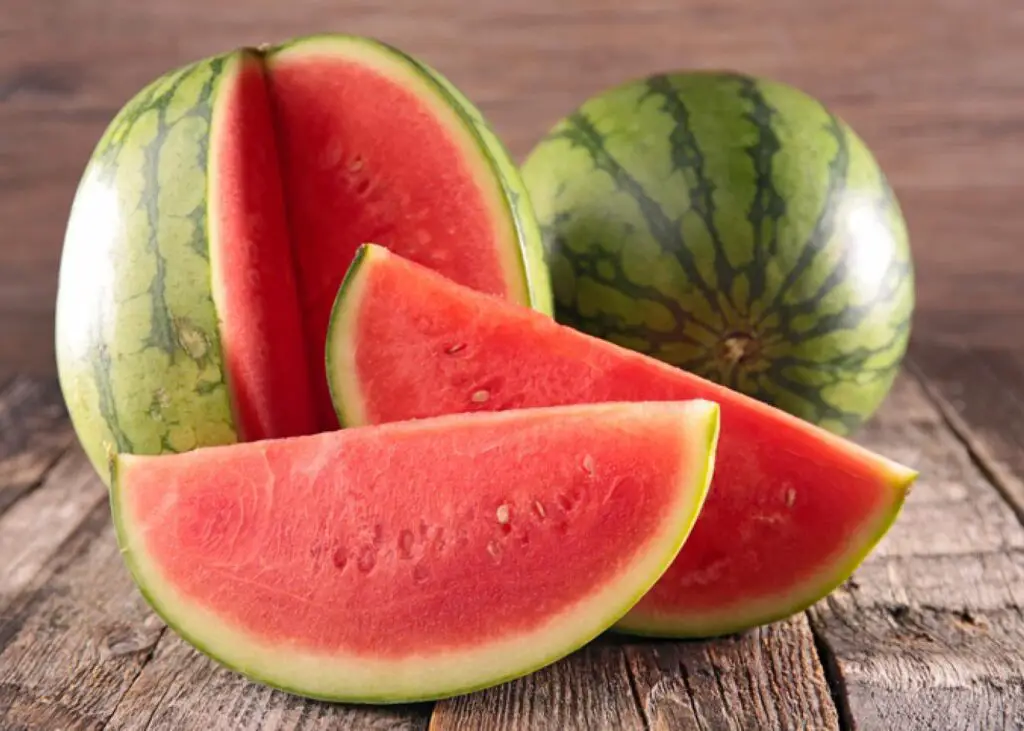
One important consideration when choosing watermelon varieties is the size of the fruit. Watermelons come in various sizes, ranging from small personal-sized melons to large ones that can weigh up to 30 pounds or more. If you have limited space in your garden, opting for smaller varieties might be more suitable. On the other hand, if you have ample space and enjoy hosting summer gatherings, larger watermelons could be a great choice.
Another crucial aspect to consider is flavor. Watermelon varieties can differ in sweetness, texture, and even the color of their flesh. Some prefer a sweeter and juicier watermelon, while others prefer a more crisp and refreshing taste. It’s a good idea to do some research and read reviews from other gardeners or consult with local agricultural extension offices to find out which varieties are known for their delicious flavor profiles.
In addition to size and flavor, it’s essential to take into account the specific growing conditions of your garden. Certain watermelon varieties are better adapted to different climates, soil types, and sunlight requirements. Pay attention to the recommended growing zones and select varieties that are suitable for your area. If you have limited sunlight, look for varieties that are more tolerant of shade. Similarly, consider the soil type in your garden and choose varieties that thrive in that specific environment.
By considering factors such as size, flavor, and growing conditions, you can select the right watermelon varieties for your garden. Doing so will increase your chances of a bountiful harvest and ensure that you can enjoy the delightful taste of homegrown watermelons all summer long. So start exploring the wide range of available varieties and get ready to experience the joy of growing your own sweet and refreshing watermelons.
Preparing the Soil for Watermelon Planting
Preparing the soil is a crucial step in ensuring successful watermelon planting. Before diving into the details, it’s important to note that watermelons thrive in well-drained and nutrient-rich soil. To create an optimal environment, start by selecting a sunny location in your garden for planting. Watermelon plants require at least six to eight hours of direct sunlight each day to thrive. Once you’ve chosen the perfect spot, it’s time to prepare the soil.
Begin by clearing the area of any weeds or debris, as these can compete with the watermelon plants for nutrients and water. Loosen the soil with a garden fork or tiller, breaking up any clumps and ensuring a loose and friable texture. Optimal watermelon soil should have good drainage to prevent waterlogging, as excess moisture can lead to root rot and other diseases. Consider incorporating organic matter, such as well-rotted compost or aged manure, into the soil to improve its fertility and structure. This will provide essential nutrients for the watermelon plants while also enhancing water retention capabilities. A soil test can be helpful in determining any nutrient deficiencies or imbalances, allowing you to add the necessary amendments to create an ideal growing environment for your watermelon plants.
Planting Watermelon Seeds or Seedlings
Planting watermelon seeds or seedlings is an important step in cultivating a successful watermelon harvest. Before getting started, it is essential to choose a watermelon variety that suits your garden and growing conditions. Consider factors such as the size of the watermelon plants, the length of the growing season, and the preferred flavor and texture of the fruits.
When planting watermelon seeds, it is crucial to prepare the soil adequately. Watermelons thrive in well-draining soil with a pH level between 6 and 7. Amend the soil with organic matter, such as compost or well-rotted manure, to improve its fertility and moisture retention capabilities. Remove any weeds or debris from the planting area and loosen the soil to facilitate healthy root growth.
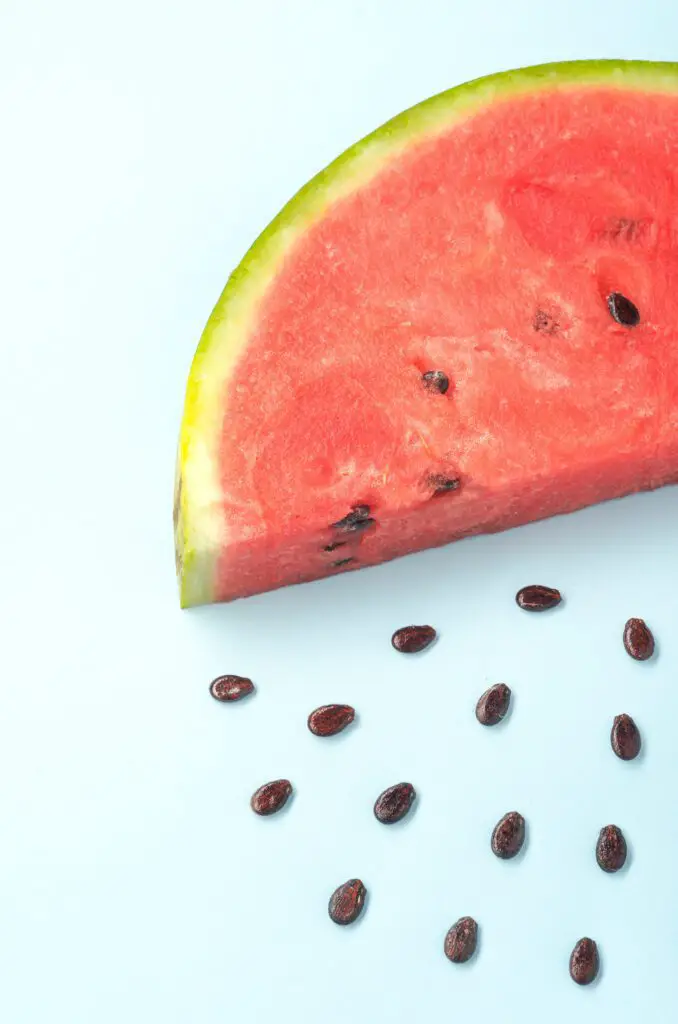
Once the soil is ready, you can proceed to plant your watermelon seeds or seedlings. If using seeds, sow them according to the recommended planting depth indicated on the seed packet, usually about 1 inch deep. Space the seeds or seedlings appropriately, allowing about 2 to 3 feet between each plant and 6 to 8 feet between rows. Water the newly planted seeds gently to ensure proper hydration without causing soil erosion or seed displacement.
Remember to take into account the optimum sunlight and water requirements of watermelon plants to provide them with the ideal growing conditions. As your watermelon plants grow, they may require support and trellising to prevent sprawling and ensure the fruits develop without touching the ground. By implementing these practices and paying attention to the specific needs of your watermelon variety, you can set the stage for a successful watermelon growing season.
Providing Optimal Sunlight and Water for Watermelon Plants
Watermelon plants require optimal sunlight and water to thrive and produce deliciously sweet fruits. Sunlight is crucial for photosynthesis, the process by which plants convert sunlight into energy and synthesize sugars. For optimal growth and fruit development, watermelon plants should be positioned in an area that receives full sunlight, which is typically around 6 to 8 hours of direct sunlight per day.
When it comes to watering watermelon plants, consistency is key. These plants have deep root systems and require regular watering to ensure that the soil remains consistently moist. However, it is important to strike a balance and avoid overwatering, as excessive moisture can lead to root rot and other problems. A good general guideline is to water the plants deeply once or twice a week, providing about 1 inch of water per week. However, it is important to adjust watering based on factors such as weather conditions, soil type, and plant size. Monitoring the moisture levels in the soil and regularly checking the plant’s leaves for signs of wilting can help determine when and how much to water.
In order to provide optimal sunlight and water for watermelon plants, it is essential to select a sunny location for planting and establish a consistent watering routine. By meeting these requirements, gardeners can ensure that their watermelon plants receive the necessary resources to grow vigorously and produce an abundance of juicy and refreshing fruits.
Implementing Proper Watermelon Plant Support and Trellising
Watermelon plants can grow quite large, with vines extending several feet in all directions. To support the weight of the melons and prevent them from touching the ground, proper support and trellising techniques are essential. Choosing the right support structure is crucial in ensuring the plants grow upright and healthy.
One commonly used method is using sturdy trellises made of materials such as wood or metal. These trellises should be at least six feet tall to accommodate the growth of the watermelon vines. Secure the trellises firmly in the ground to prevent them from toppling over due to strong winds or the weight of the plants.
Another option is using a cage or a fence-like structure made specifically for watermelon plants. These structures provide support for the vines and allow the fruits to rest on the trellis, minimizing contact with the ground. This not only helps reduce the risk of rot and disease but also improves air circulation around the plants.
This table outlines the steps for implementing proper support and trellising for watermelon plants:
| Step | Description |
|---|---|
| Select Sturdy Trellis or Support | Choose a sturdy trellis, cage, or support structure capable of bearing the weight of watermelon vines and fruits. |
| Install Trellis or Support | Place the trellis or support system in the garden before planting or when seedlings are young to avoid root disturbance. |
| Train Vines Regularly | Gently guide watermelon vines towards the trellis, securing them loosely using soft ties or twine as they grow. |
| Prune Excess Growth | Regularly prune side shoots and excess foliage to encourage upward growth and prevent overcrowding on the trellis. |
| Support Growing Fruits | Use slings, hammocks, or fabric strips to cradle developing watermelons on the trellis, providing support as they grow. |
| Monitor and Adjust | Regularly inspect the trellis or support system, making adjustments to ensure it can adequately support the weight of developing fruits. |
| Maintain Air Circulation | Properly spaced vines and fruits on the trellis promote air circulation, reducing the risk of diseases and improving fruit quality. |
| Harvest Carefully | When harvesting, gently remove ripe watermelons from the trellis or support structure to avoid damaging the vines or fruits. |
Whichever support method you choose, it’s crucial to start implementing it early in the growth of the watermelon plants. Young vines are more flexible and easier to train onto the trellis. As the plants grow, gently guide the tendrils towards the support structure, ensuring that they are securely attached and can bear the weight of the growing fruits.
Properly implementing watermelon plant support and trellising techniques can significantly enhance the overall health and productivity of your watermelon plants. By providing adequate support, you not only improve the airflow and reduce the risk of pests and diseases but also promote more even ripening and higher quality fruits.
Understanding the Importance of Pollination for Watermelon Growth
Pollination plays a crucial role in the growth and development of watermelons. This natural process involves the transfer of pollen from the male flowers to the female flowers, leading to the formation of fruit. Without proper pollination, watermelon plants may produce underdeveloped or misshapen fruits, resulting in disappointing harvests.
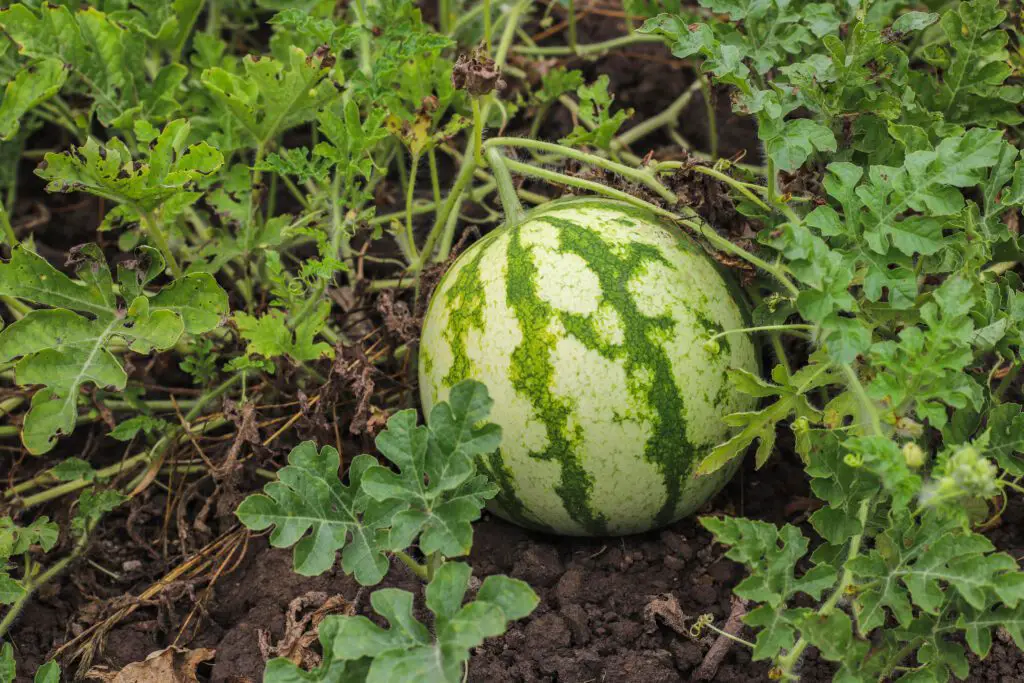
Watermelons have both male and female flowers on the same plant, but they rely on external agents like bees and other insects for pollination. As bees collect nectar from the flowers, they inadvertently brush against the male flowers and carry pollen grains to the female flowers. This transfer of pollen is essential for fertilization to occur and for fruit to set.
To ensure successful pollination, it is important to create an environment that attracts pollinators to your garden. Planting diverse flowering plants that bloom throughout the growing season can provide a continuous source of nectar for bees and other beneficial insects. Additionally, avoiding the use of pesticides harmful to these pollinators is crucial, as it can disrupt their natural behavior and diminish their population. By prioritizing pollinator-friendly practices, you can greatly enhance the pollination process and optimize the growth of your watermelon plants.
Identifying and Managing Common Watermelon Pests and Diseases
Watermelon plants, like any other plants, can face a range of pests and diseases that can hinder their growth and reduce fruit yield. Identifying and managing these common watermelon pests and diseases is crucial to ensure a successful harvest. Two common pests that can cause damage to watermelon plants are aphids and cucumber beetles.
Aphids are small, soft-bodied insects that feed on the sap of watermelon plants, causing stunted growth and distortion of leaves. To identify aphid infestation, look for clusters of small, pear-shaped insects on the undersides of leaves. To manage aphids, you can introduce natural predators like ladybugs or lacewings, which will feed on these pests. Alternatively, spraying a mixture of water and dish soap on the affected plants can also help control aphids.
Cucumber beetles are another common pest that can damage watermelon plants. These beetles can feed on the leaves of the plants, leading to leaf wilting and browning. They can also transmit bacterial wilt, a serious disease that can cause watermelon plants to die. To identify cucumber beetle infestation, look for small, striped beetles on the leaves and flowers of the plants. To manage cucumber beetles, you can use insecticidal sprays or dusts that are specifically labeled for their control. Additionally, practicing crop rotation and removing plant debris from the garden can help reduce their populations.
This table shows common pests and diseases that can affect watermelon plants along with their management:
| Pest/Disease | Description | Management |
|---|---|---|
| Aphids | Small, sap-sucking insects that cluster on undersides of leaves, causing leaf distortion and yellowing. | Use insecticidal soap, neem oil, or introduce natural predators like ladybugs. |
| Whiteflies | Tiny, white flying insects that feed on plant sap and cause yellowing of leaves. | Use yellow sticky traps, insecticidal soap, or neem oil. |
| Spider Mites | Tiny pests that suck plant juices, causing stippling and webbing on leaves. | Use water sprays, insecticidal soap, or neem oil. Introduce predatory mites. |
| Powdery Mildew | Fungal disease appearing as white powdery spots on leaves, reducing plant vigor and fruit quality. | Apply fungicides, improve air circulation, and avoid overhead watering. |
| Downy Mildew | Fungal disease causing yellow lesions on leaves and a downy growth on the underside. | Apply copper-based fungicides and practice good sanitation. |
| Fusarium Wilt | Soil-borne fungal disease causing wilting, yellowing, and eventual plant death. | Use resistant cultivars, practice crop rotation, and maintain soil health. |
| Anthracnose | Fungal disease leading to sunken lesions on fruits and leaves, often spreading rapidly in humid conditions. | Apply fungicides, remove infected plant parts, and improve air circulation. |
| Cucumber Beetles | Pests that feed on leaves, transmit bacterial wilt, and damage young plants. | Use row covers, handpick beetles, and apply insecticides as necessary. |
| Squash Vine Borers | Larvae bore into stems, causing wilting and plant collapse. | Use floating row covers, remove and destroy affected stems, and practice crop rotation. |
By effectively identifying and managing common watermelon pests and diseases, you can prevent significant damage to your plants and ensure a healthy harvest. Remember to regularly inspect your plants for any signs of infestation or disease and take timely action to control them. It is always recommended to consult with local gardening experts or extension services for specific pest and disease management strategies in your region. With proper care and attention, your watermelon plants can thrive and produce delicious fruits for you to enjoy.
Pruning Watermelon Plants for Better Fruit Development
When it comes to cultivating watermelons, pruning plays a crucial role in promoting better fruit development. By selectively removing certain plant parts, gardeners can enhance the overall health and productivity of their watermelon plants. One primary goal of pruning is to improve air circulation and reduce the risk of diseases caused by excessive moisture and restricted air movement. By cutting away excess foliage, particularly on the lower parts of the plant, gardeners can help prevent the development and spread of fungal infections. Additionally, pruning promotes better access to sunlight for the remaining leaves, allowing for more efficient photosynthesis and, ultimately, more abundant fruit production.
However, it is essential to remember that watermelon plants differ from other fruit-bearing plants when it comes to pruning. Unlike many plants that benefit from aggressive pruning, watermelon plants require a more selective and gentle approach. Over-pruning can lead to reduced fruit yield and overall plant vigor. Therefore, it is crucial to prune watermelon plants cautiously and with a clear understanding of their growth habits. Generally, gardeners should focus on removing any damaged or diseased foliage, as well as thinning out excessive growth that may hinder proper air circulation and sunlight exposure. By following these guidelines, gardeners can optimize the development of their watermelon plants and enjoy a bountiful harvest of sweet and juicy fruits.
Fertilizing Watermelon Plants to Promote Healthy Growth
Fertilizing watermelon plants is essential for promoting healthy growth and maximizing fruit production. Watermelons have specific nutrient requirements that must be met to ensure optimal development throughout their growth cycle. Nitrogen, phosphorus, and potassium are the three primary nutrients needed in larger quantities by watermelons.
To provide sufficient nitrogen, apply a balanced fertilizer with a higher nitrogen content during the early stages of growth. This will promote vigorous foliage growth and overall plant health. As the watermelon plants start to develop flowers and fruits, switch to a fertilizer with a higher phosphorus and potassium ratio to support flowering, fruit set, and fruit development.
Additionally, micronutrients such as iron, magnesium, and calcium play crucial roles in watermelon plant health. An iron deficiency can lead to yellowing leaves, while magnesium is necessary for chlorophyll production. Calcium is responsible for preventing physiological disorders such as blossom end rot.
It is important to conduct soil tests to determine the nutrient levels and adjust the fertilization accordingly. Regularly monitoring the plants for any signs of nutrient deficiencies or excesses is crucial for maintaining the overall health of watermelon plants. Remember to always follow the instructions on the fertilizer package, as over-fertilization can be detrimental to the plants. Providing the right nutrients at the right time will help promote healthy growth and ensure a bountiful harvest of delicious watermelons.
Recognizing Signs of Ripeness in Watermelons
When it comes to harvesting watermelons, timing is key to ensure that you enjoy the optimal flavor and sweetness. But how do you know when a watermelon is truly ripe and ready for picking? There are a few key signs to look out for.
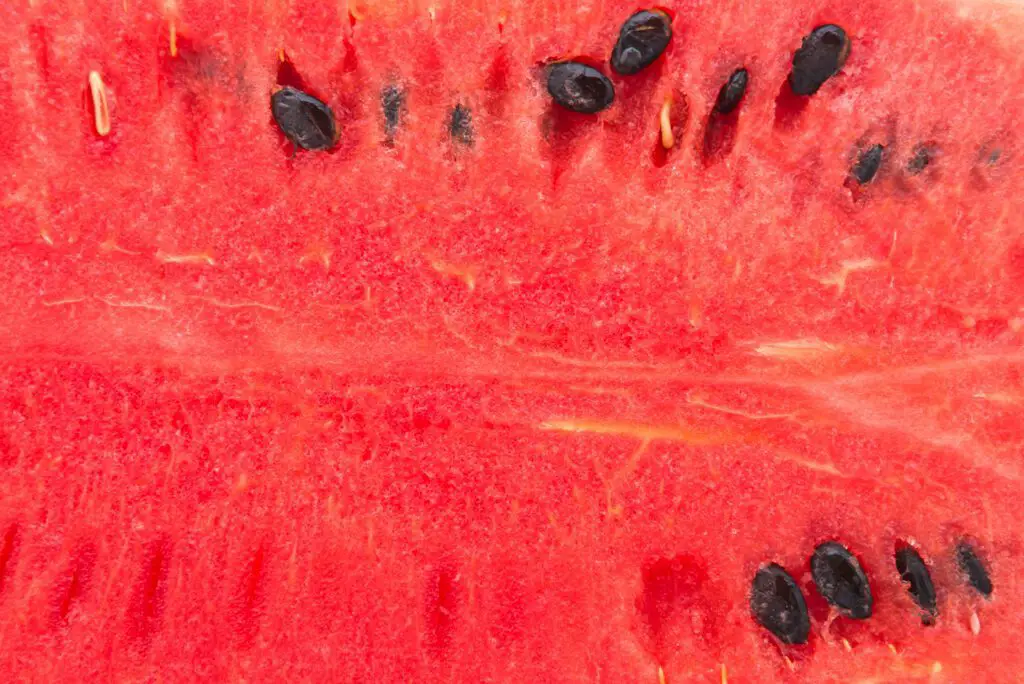
First and foremost, take a close look at the color of the watermelon’s skin. A ripe watermelon will have a deep, uniform color. For most varieties, this means a vibrant green or yellow color. As the watermelon ripens, the skin color should develop evenly and become more intense. Avoid watermelons with patches of light or pale color, as this may indicate that it is not fully ripe.
Another sign of ripeness is the texture of the watermelon’s skin. Give it a gentle tap with your knuckles, and if it produces a hollow sound, it is a good indicator that the fruit is ripe. Additionally, a ripe watermelon will have a slightly rough texture on the skin, rather than a smooth or glossy appearance. This roughness indicates that the flesh inside has reached its peak sweetness.
Harvesting Watermelons at the Right Time for Optimal Flavor
Harvesting watermelons at the right time is crucial for achieving optimal flavor. The moment when these juicy fruits reach their peak ripeness is a culmination of careful observation and patience. As a gardener, it is important to understand the signs that indicate when watermelons are ready to be harvested.
One of the primary indicators of ripeness is the color of the watermelon’s exterior. Depending on the variety, a ripe watermelon will display a vibrant, rich color. For instance, a classic watermelon should have a deep green rind, while a yellow watermelon should exhibit a golden hue. Additionally, the rind should be firm and the surface should be slightly dull rather than shiny.
Still confused about the right time? Here, watch this video to learn more:
Another clue to determine the readiness of a watermelon is its sound when tapped. A ripe watermelon will produce a hollow, deep sound, indicating that it is full of sweet, refreshing juice. Conversely, an immature watermelon will produce a higher-pitched or dull sound, suggesting that it needs more time on the vine.
Storing Watermelons to Extend Their Shelf Life
When it comes to enjoying the sweet and juicy taste of a watermelon, there’s nothing worse than discovering that your prized fruit has started to spoil. Properly storing watermelons is essential to prolonging their shelf life and ensuring that they stay fresh and delicious for as long as possible.
One crucial factor to consider when storing watermelons is temperature. Ideally, watermelons should be stored at a cool temperature, around 50 to 60 degrees Fahrenheit (10 to 15 degrees Celsius). This helps slow down the ripening process and prevents the fruit from deteriorating too quickly. Avoid storing watermelons in extremely cold temperatures, as this can lead to chilling injuries and affect their overall quality.
Secondly, it’s important to find a suitable location for storing your watermelons. A cool and dry place, such as a basement or cellar, is ideal. Make sure to keep the watermelons away from direct sunlight and other fruits, as they release ethylene gas which can hasten the ripening process. Additionally, it’s essential to store watermelons away from areas with strong odors, as they can absorb these odors and affect the fruit’s taste and quality.
By practicing proper storage techniques, you can extend the shelf life of your watermelons and enjoy their refreshing taste for longer. Stay tuned for more tips on nurturing and savoring your homegrown watermelons.
Exploring Different Ways to Enjoy Watermelon Recipes
Watermelon is not only a refreshing fruit to eat on its own, but it can also be incorporated into various delicious recipes. From salads to smoothies, there are many ways to explore the versatility of this juicy summer favorite.
One popular way to enjoy watermelon is by creating a refreshing watermelon salad. Combining cubed watermelon with ingredients such as feta cheese, mint leaves, and a tangy dressing can create a mouthwatering blend of flavors. The sweetness of the watermelon balances out the saltiness of the cheese, while the mint adds a refreshing touch. This salad not only satisfies your taste buds but also provides a healthy dose of vitamins and minerals.
For those seeking a cool and hydrating drink, watermelon smoothies are an excellent choice. Blending chunks of watermelon with a splash of lime juice and a handful of ice creates a refreshing and rejuvenating beverage. You can also experiment by adding other fruits like strawberries or peaches for an added twist. These smoothies are not only delicious but are also a great source of hydration, as watermelon contains high water content.
As you explore the many ways to enjoy watermelon in your recipes, don’t be afraid to get creative and try new combinations. Whether it’s adding watermelon to your summer salsa or grilling it as a unique side dish, the possibilities are endless. Embrace the sweetness and juiciness of this fruit and let your culinary imagination soar.
• Watermelon salad: Combine cubed watermelon with feta cheese, mint leaves, and tangy dressing for a flavorful blend of sweet and salty.
• Watermelon smoothies: Blend watermelon chunks with lime juice and ice for a refreshing and hydrating drink. Experiment by adding other fruits like strawberries or peaches.
• Get creative: Add watermelon to summer salsa or grill it as a unique side dish to explore new flavor combinations.
• Embrace the sweetness and juiciness of watermelon in your culinary creations. Let your imagination soar!
Sharing Watermelon Growing Tips and Experiences
Watermelon growing is a popular pastime for many gardening enthusiasts, and there’s nothing quite like the taste of a freshly harvested watermelon from your own garden. Whether you’re a seasoned pro or just starting out, sharing your watermelon growing tips and experiences can be a great way to connect with other like-minded individuals and help them achieve success in their own gardens.
One valuable tip I’ve learned over the years is the importance of selecting the right watermelon varieties for your garden. Different varieties have varying characteristics, such as size, flavor, and disease resistance. It’s crucial to choose varieties that are well-suited to your local climate and growing conditions. For example, if you live in a region with a short growing season, look for early-maturing varieties that can reach maturity before the first frost. On the other hand, if you have a longer growing season, you can experiment with larger heirloom varieties that take a bit longer to mature. Sharing your experiences with different varieties can help others make informed decisions when it comes to selecting the best watermelons for their gardens.
Mistakes that you should completely avoid! Go check this video out to know more:
Another important aspect of successful watermelon growing is providing optimal sunlight and water for the plants. Watermelons are sun-loving plants that require at least six to eight hours of direct sunlight each day to thrive. Additionally, they are heavy feeders and require consistent moisture throughout the growing season. Adequate watering is crucial, especially during hot and dry periods, to ensure the plants stay hydrated and the fruits develop properly. Sharing your knowledge about proper sun exposure and watering techniques, as well as any tricks or tips you’ve discovered along the way, can be invaluable to fellow gardeners. Together, we can create a community of watermelon enthusiasts who can learn from and support each other on our growing journeys.
What are some common pests that can affect watermelon plants?
Common pests that can affect watermelon plants include aphids, cucumber beetles, and spider mites.
How can I prevent diseases from affecting my watermelon plants?
To prevent diseases, it is important to practice good sanitation by removing any infected plants and debris from the garden. Additionally, you can use disease-resistant watermelon varieties and avoid overwatering, as excess moisture can promote disease development.
Are there any specific pruning techniques for watermelon plants?
Yes, pruning watermelon plants can help improve fruit development. One technique is to remove any lateral vines and leaves that are blocking sunlight from reaching the developing fruits. It is also recommended to trim off any runners that are not producing fruits.
How often should I fertilize my watermelon plants?
Watermelon plants benefit from regular fertilization. It is recommended to fertilize them every two to three weeks during the growing season. Using a balanced fertilizer with a higher ratio of nitrogen in the early stages and higher phosphorus and potassium ratios as the fruits develop can promote healthy growth.
How do I know when a watermelon is ripe and ready to harvest?
You can determine if a watermelon is ripe by observing its external characteristics. Look for a dull skin color, a yellow or cream-colored underside, and a dried-out curly tendril near the fruit’s stem. Additionally, the watermelon should produce a hollow sound when tapped.
What is the best way to store watermelons after harvesting?
Watermelons should be stored at room temperature for a few days to allow them to fully ripen. Once ripe, they can be stored in the refrigerator for up to two weeks. It is important to keep them separate from other fruits and vegetables to prevent the release of ethylene gas, which can accelerate ripening.
Can you provide some unique watermelon recipe ideas?
Yes, here are some unique watermelon recipe ideas: watermelon feta salad with mint, watermelon gazpacho, watermelon salsa, grilled watermelon skewers, and watermelon sorbet. These recipes offer refreshing and creative ways to enjoy watermelon.

Pallavi Gupta is a burgeoning writer at SouthElMonteHydroponics, blending her passion for data analysis with a keen interest in biotechnology. Currently pursuing a Bachelor’s in Biotechnology at Amity University, Pallavi delves into the intricacies of life sciences while gaining hands-on experience in the exciting world of data analysis. Her unique background provides a fresh perspective on hydroponic farming, as she explores the intersection of biotechnology and sustainable agriculture. Through her writing, Pallavi aims to bridge the gap between data-driven insights and innovative farming practices, inspiring others to harness technology for a greener future.

